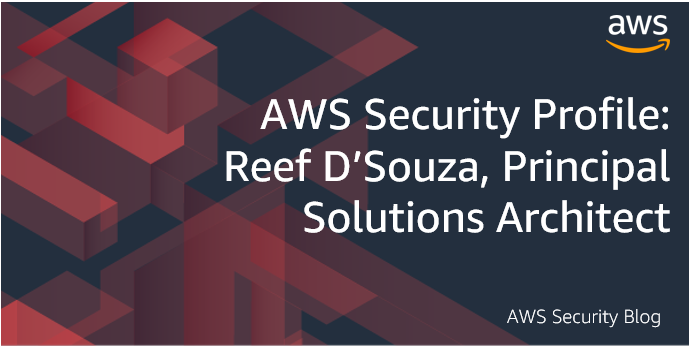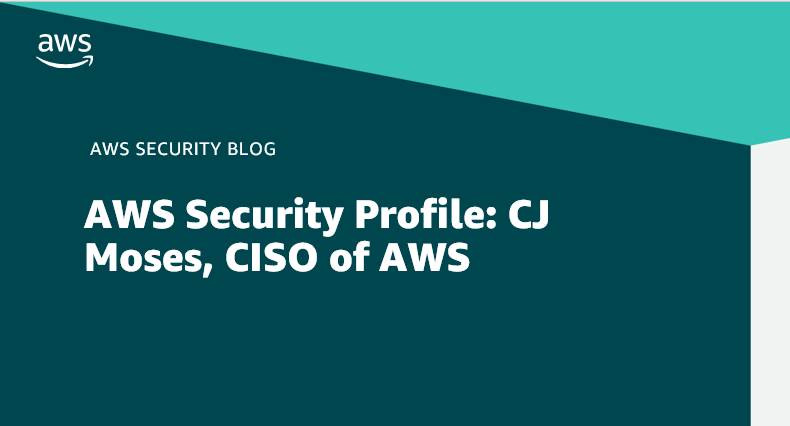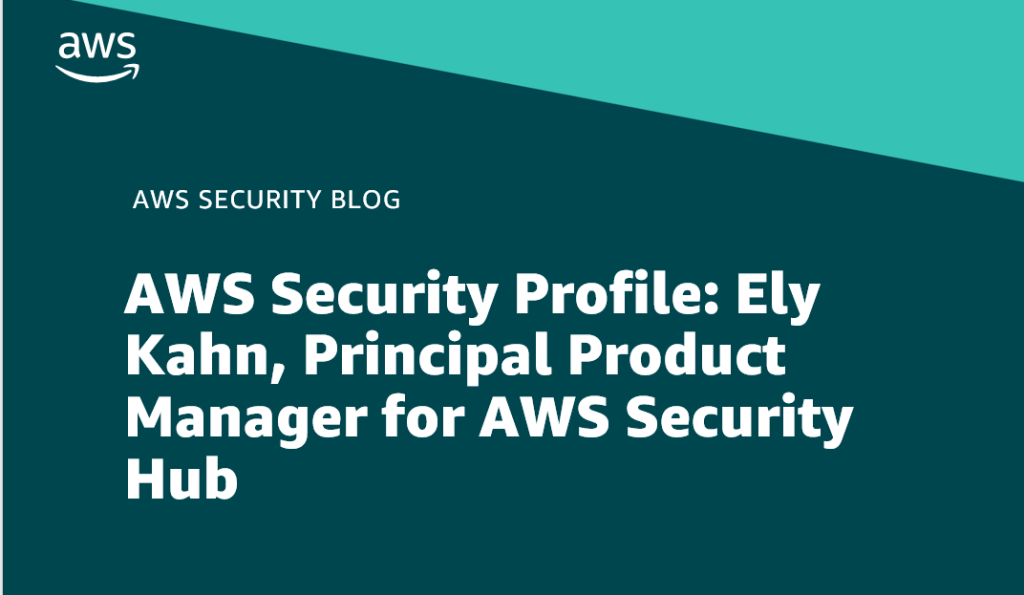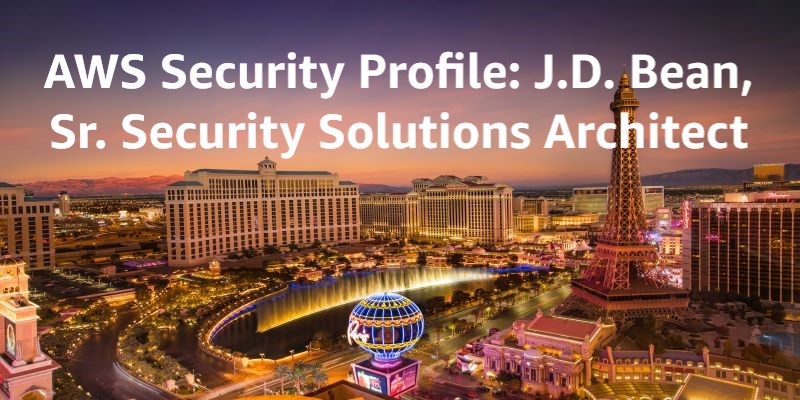Post Syndicated from Maddie Bacon original https://aws.amazon.com/blogs/security/aws-security-profile-arynn-crow-sr-manager-for-aws-user-authn/
AWS Security Profile series, I interview some of the humans who work in AWS Security and help keep our customers safe and secure. In this profile, I interviewed Arynn Crow, senior manager for AWS User AuthN in AWS Identity.
How long have you been at AWS, and what do you do in your current role?
I’ve been at Amazon for over 10 years now, and AWS for three of those years. I lead a team of product managers in AWS Identity who define the strategy for our user authentication related services. This includes internal and external services that handle AWS sign-in, account creation, threat mitigation, and underlying authentication components that support other AWS services. It’s safe to say that I’m thinking about something different nearly every day, which keeps it fun.
How do you explain your job to non-technical friends and family?
I tell people that my job is about figuring out how to make sure that people are who they say they are online. If they want to know a bit more, sometimes I will relate this to examples they’re increasingly likely to encounter in their everyday lives—getting text or email messages for additional security when they try to sign in to their favorite website, or using their fingerprint or facial scan to sign in instead of entering a password. There’s a lot more to identity and authentication, of course, but this usually gets the point across!
You haven’t always been in security. Tell me a little bit about your journey and how you got started in this space?
More than 10 years ago now, I started in one of our call centers as a temporary customer service agent. I was handling Kindle support calls (this was back when our Kindles still had physical keyboards on them, and “Alexa” wasn’t even part of our lexicon yet). After New Year’s 2013, I was converted to a full-time employee and resumed my college education—I earned both of my degrees (a BA in International Affairs, and MA in political science) while working at Amazon. Over the next few years, I moved into different positions including our Back Office team, a Kindle taskforce role supporting the launch of a new services, and Executive Customer Relations. Throughout these roles, I continued to manage projects related to anti-abuse and security. I got a lot of fulfillment out of these projects—protecting our customers, employees, and business against fraud and data loss is very gratifying work. When a position opened up in our Customer Service Security team, I got the role thanks in part to my prior experience working with that team to deliver security solutions within our operations centers.
After that, things moved fast—I started first with a project on account recovery and access control for our internal workforce, and continuously expanded my portfolio into increasingly broad and more technical projects that all related to what I now know is the field of Identity and Access Management. Eventually, I started leading our identity strategy for customer service as a whole, including our internal authentication and access management as well as external customer authentication to our call centers. I also began learning about and engaging more with the security and identity community that existed outside of Amazon by attending conferences and getting involved with organizations working on standards development like the FIDO Alliance. Moving to AWS Identity a few years later was an obvious next step to gain exposure to broader applications of identity.
What advice do you have for people who want to get into security but don’t have the traditional background?
First, it can be hard. This journey wasn’t easy for me, and I’m still working to learn more every day. I want to say that because if someone is having trouble landing their first security job, or feeling like they still don’t “fit” at first when they do get the job, they should know it doesn’t mean they’re failing. There are a lot of inspiring stories out there about people who seemingly naturally segued into this field from other projects and work, but there are just as many people working very hard to find their footing. Everyone doubts themselves sometimes. Don’t let it hold you back.
Next for the practical advice, whatever you’re doing now, there are probably opportunities to begin looking at your space with a security lens, and start helping wherever you find problems to address or processes to improve by bringing them to your security teams. This will help your organization while also helping you build relationships. Be insatiably curious! Cybersecurity is community-oriented, and I find that people in this field are very passionate about what we do. Many people I met were excited that I was interested in learning about what they do and how they do it. Sometimes, they’d agree to take a couple hours with me each month for me to ask questions about how things worked, and narrow down what resources were the best use of my time.
Finally, there are a lot of resources for learning. We have highly competent, successful security professionals that learned on the job and don’t hold a roster of certifications, so I don’t think these are essential for success. But, I do think these programs can be beneficial to familiarize you with basic concepts and give you access to a common language. Various certification and training courses exist, from basic, free computer science courses online to security-specific ones like CISSP, SANS, COMPTIA Security+, and CIDPro, to name just a few. AWS offers AWS-specific cloud security training, too, like our Ramp-Up Guide. You don’t have to learn to code beautifully to succeed in security, but I think developing a working understanding of systems and principles will help build credibility and extract deeper learning out of experiences you have.
In your opinion, why is it important to have people with different backgrounds working in security?
Our backgrounds color the way we think about and approach problems, and considering all of these different approaches helps make us well-rounded. And particularly in the current context, in which women and marginalized communities are underrepresented in STEM, expanding our thinking about what skills make a good security practitioner makes room for more people at the table while giving us a more comprehensive toolkit to tackle our toughest problems. As for myself, I apply my training in political science. Security sometimes looks like a series of technical challenges and solutions, but it’s interwoven with a complex array of regulatory and social considerations, too—this makes the systems-based and abstract thinking I honed in my education useful. I know other folks who came to identity from social science, mathematics, and biology backgrounds who feel the same about skills learned from their respective fields.
Pivoting a bit, what’s something that you’re working on right now that you’re excited about?
It’s a very interesting time to be working on authentication, many people who aren’t working in enterprises or regulated industries are still hesitant to adopt controls like multi-factor authentication. And beyond MFA, organizations like NIST and CISA are emphasizing the importance of phishing-resistant MFA. So, at the same time we’re continuously working to innovate in our MFA and other authentication offerings to customers, we’re collaborating with the rest of the industry to advance technologies for strong authentication and their adoption across sectors. I represent Amazon to the FIDO Alliance, which is an industry association that supports the development of a set of protocols collectively known as FIDO2 for strong, phishing-resistant authentication. With FIDO and its various member companies, we’re working to increase the usability, awareness, and adoption of FIDO2 security keys and passkeys, which are a newer implementation of FIDO2 that improves ease of use by enabling customers to use phishing-resistant keys across devices and platforms.
In your opinion, what is the coolest thing happening in identity right now?
What I think is the most important thing happening in identity is the convergence of digital and “traditional” identities. The industry is working through challenging questions with emerging technology right now to bring forth innovation balanced with concern for equity, privacy, and sustainability. Ease of use and improved security for users as well as abuse prevention for businesses is driving conversion of real-life identities and credentials (such as peoples’ driver’s licenses as one example) to a digital format, such as digital driver’s licenses, wallets, and emerging verifiable credentials.
What are you most proud of in your career?
I’m most grateful for the opportunities I’ve had to help define the next chapter of the AWS account protection strategy. Some of our work also translates to features we get to ship to customers, like when we extended support for multiple MFA devices for AWS Identity and Access Management (IAM) late last year, and this year we announced that in 2024 we will require MFA when customers sign in to the AWS Management Console. Seeing how excited people were for a security feature was really awesome. Account protection has always been important, but this is especially true in the years following the COVID-19 outbreak when we saw a rapid acceleration of resources going digital. This kind of work definitely isn’t a one-person show, and as fulfilling as it is to see the impact I have here, what I’m really proud of is that I get to work with and learn from so many really smart, competent, and kind team members that are just as passionate about this space as I am.
If you were to do anything other than security, what would you want to do?
Before I discovered my interest for security, I was trying to decide if I would continue on from my master’s program in political science to do a PhD in either political science or public health. Towards the end of my degree program, I became really interested in how research-driven public policy could drive improvements in maternal and infant health outcomes in areas with acute opioid-related health crises, which is an ongoing struggle for my home place. I’m still very invested in that topic and try to keep on top of the latest research—I could easily see myself moving back towards that if I ever decide it’s time to close this chapter.
If you have feedback about this post, submit comments in the Comments section below. If you have questions about this post, contact AWS Support.
Want more AWS Security news? Follow us on Twitter.

















